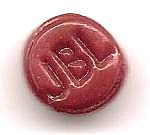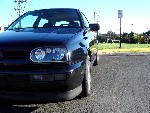- Well, okay, I'm baffled .

- I just used the 1/2 voltage method ( on a partially reconstructed horn circuit / ie ; minus its' low pass section , but the rest of the horn circuit is present ).
- Capacitors are Solen ( I have boxes of them ) .
- All the test equipment signal grounds are referenced back to the amps output ground / so there is no floating ground .
- I built a woofer circuit & loaded it with an 8 ohm dummy load ( looking for interaction between the 2 network branches ) I didn't find any, though I didn't build up the Zobel . Maybe that's next .
- My reference frequency is 3000 hz ( to stay above this circuits' "bump-filter" ).
- Volt Meter is my old AC powered B&K 290 . Useful for its' huge metering . All the AC powered stuff is "warmed-up" .
And still:
- I get a 3 db down point for the horns' hipass at @ 760 hz ( with the 16 ohm Lpad fully open ) .
- With that same Lpad attenuated ( 10db, measured acoustically ) the new 3 db down-point has risen slightly to @ 775 hz .
So :
- Anyone have any ideas where the discrepencies might be arising between Todds' and my measurements ?
- Anyone want to comment on my testing methods and offer up some insights ?
Thanks !

Originally Posted by Giskard




 Reply With Quote
Reply With Quote





 ]
]

 ...
...
